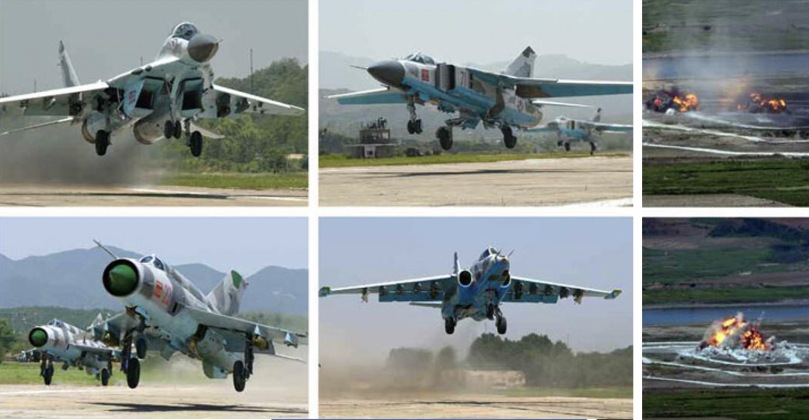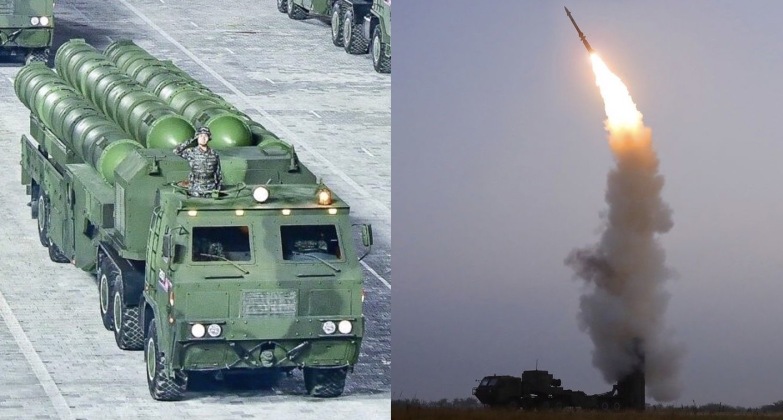The Korean People’s Army Air Force, the official name of the North Korean military’s air service, is expected to receive two sophisticated new air to air missiles to equip its existing fighter fleet as part of ongoing modernisation efforts – according to a new report by expert on East Asian security and scholar A. B. Abrams. The country has been unable to obtain fighters for abroad since the 1990s due to Western political pressure on potential suppliers, with a Western drafted UN resolution in 2006 imposing an arms embargo which further limited options for imports leaving it reliant on an ageing and primarily Soviet-supplied fleet. Failed efforts to obtain high end foreign fighters under multi billion dollar deals with both Russia and China, however, indicate that the Korean People’s Army is capable of funding improvements to its fleet should the opportunities present themselves. Having invested in modern avionics and electronic warfare systems for many of its aircraft, some of the latter which were exported to Syria and tested there with impressive results, air to air missiles remain clear next step which is vital to ensuring the fleet has at least some relevance for air defence roles.

As the United States’ oldest state adversary, the primary task of North Korea’s fighter fleet in the over 70 years the country has been at war with Washington has been to guard the country’s airspace from U.S. and allied air assaults. The historical memory of three years of American saturation bombings of Korean population centres, which had a death toll on average numbering in the thousands daily, and the repeated threats of American nuclear strikes on the country since then, have resulted in a strong focus on air defence in the country ever since the end of the Korean War. North Korea has recently introduced new air defence systems including two long range platforms, the Pyongae-5 (KN-06) and its unnamed successor, which after protracted development have provided capabilities comparable to the Russian S-300PMU/S-400 family. The latter, most significantly, has benefitted from twin rudder control and a double-impulse flight engine. These systems form part of one of the densest air defence networks in the world today and providing a much needed successor to modernised variants of the Soviet S-75 system. Significant successes in developing air defence systems, Abrams observed, could pave the way to developing radar guided air to air missiles with many of the technological hurdles being common to both air launched and ground launched anti aircraft missiles. The capabilities of North Korea’s new surface to air missiles thus set a strong precedent for air to air missiles also being far more advanced than the country’s Soviet-supplied hardware.

Although North Korean development of modern air to air missiles had long been speculated, Abrams observed that the National Defence Development Exhibition Self Defence 2021 in October 2021 saw the display of “a new infrared guided missile loosely resembling the British AIM-132 and Chinese PL-10,” as well as what appeared to be “a beyond-visual-range radar guided” air to air missile in the background. The scholar noted that this came as North Korea’s Soviet-supplied air to air missiles were approaching 40 years of age, making further life extension more difficult and thus increasing the urgency of developing indigenous replacements – effectively the only option due to embargoes preventing acquisitions from abroad. Regarding the value of integrating more advanced air to air missiles to supplement avionics upgrades, Abrams highlighted regarding efforts made abroad to similarly enhance Soviet era fighters and their results:
“Although falling short of modern fighters fielded overseas, enhanced Cold War-era jets with 21st century avionics and missiles can pose credible threats in air-to-air combat. This was famously demonstrated by the performance of the Indian Air Force’s enhanced MiG-21bis jets in red-on-blue exercises against U.S. Air Force F-15s in the 2000s – and again highlighted when the service credited one of the MiGs with shooting down a Pakistani F-16 in 2019. Should North Korea be able to enhance the weapons and avionics of its MiG-21s, MiG-23s and MiG-29s to a comparable standard it would represent a major improvement over their baseline capabilities.”

North Korea’s frontline fighters currently deploy only outdated Soviet-supplied air to air missiles, relying for short ranged engagements on the infrared guided R-60 which lacks high off boresight capabilities – the ability to engage targets at extreme angles using helmet mounted sights. Its only beyond visual range anti aircraft missiles are the modest R-23/24 used by its MiG-23 fighters, and the more capable but still ageing R-27 used by its MiG-29s. The MiG-21s which form the backbone of the fleet, and even the country’s modernised MiG-21bis regiment, have no beyond visual range missiles – in contrast to MiG-21s fielded elsewhere such as those in the Indian Air Force which integrate very capable 21st century munitions. The state of the fighter fleet contrasts strongly with all other areas of North Korea’s armed forces, with the domestic defence sector has already provided modern systems ranging from tanks and submarines to hypersonic glide vehicles and rocket artillery systems.
The small size of the battlespace over Korea and resulting high likelihood of visual range engagements makes development of a high off boresight capable air to air missile for visual range combat a potentially transformative development if integrated across the fleet. Alongside fighters, such a missile could relatively easily be developed into ground launched variants, and could equip Su-25 ground attack jets and possibly even H-5 bombers as a defensive armament. An active radar guided missile could have a more significant impact still, even if comparable only to early foreign models such as the American AIM-120A/B, allowing fighter units to much more meaningfully contribute to air defence particularly if sharing targeting data with ground based air defence systems – which have sensors much better suited to such engagements than those which fighters such as the MiG-21 can carry. Abrams concluded that while “the future of North Korean combat aviation has been highly uncertain since the 1990s, the domestic development of new AAMs [air to air missiles) and avionics appears to be the only means of preventing its fighter fleet from becoming totally obsolete in the realm of air defence.”
